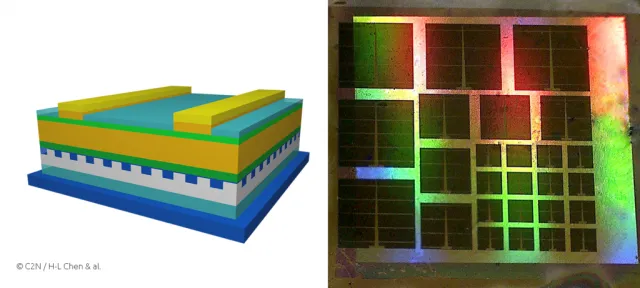German-French scientists develop ultra-thin GaAs solar cell with 19.9% efficiency
Aug 7, 2019 04:58 PM ET
- The researchers have developed a new manufacturing process by using an ultra-thin absorbing layer made of 205-nanometer-thick gallium arsenide (GaAs) and a nanostructured back mirror.

A research team from Germany’s Fraunhofer ISE and France’s Centre for Nanoscience and Nanotechnology (C2N) claim to have developed an ultra-thin solar cell based on Gallium arsenide (GaAs), which is a compound of elements belonging to the so-called III-V materials, with an efficiency of 19.9%.
The results, the scientists have explained, were obtained through a new manufacturing process that is characterized by the use of a 205-nanometer-thick absorbing GaAs layer and a nanostructured back mirror. “The guiding idea was to conceive a nanostructured back mirror to create multiple overlapping resonances in the solar cell, identified as Fabry–Perot and guided-mode resonances,” said Fraunhofer ISE.
These resonances are said to trap light in the absorber for a longer time. Simultaneously, they improve optical absorption, which is enhanced over a large spectral range that fits the solar spectrum from the visible to the infrared.
The silver back mirror was fabricated at the nanometer scale by soft nano-imprint lithography, through the application of a sol-gel derived film of titanium dioxide. “Controlling the fabrication of patterned mirrors at the nanometer scale was a key in the project,” the research team said.
It also believed that this cell technology could reach a 25% efficiency rate in the short term. It is also thought that the cell’s thickness could be further lowered without efficiency losses. The results of the research were published in “III-V Photovoltaics and Concentrator Technology,” in the scientific journal Nature Energy.
Also read
- TCL Solar Secures 250 MW Pakistan Distribution Deals to Accelerate Growth
- UbiQD Secures Landmark Quantum Dot Deal with First Solar
- Astronergy Invests $53M in Tandem Solar Cell Project
- ARENA Unveils $39M Solar Innovation Funding Round
- REC Silicon Board Concedes It Has No Escape From Hanwha’s NOK 2.20-per-Share Takeover
